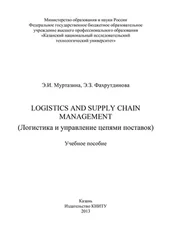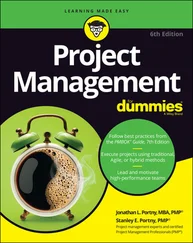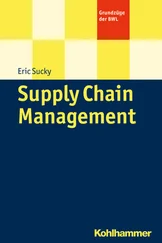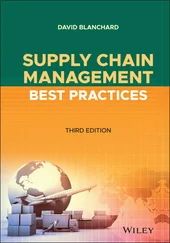Improving and Innovating Processes
Supply chains are made up of people, processes, and technologies. All three components need to improve over time for a supply chain to remain competitive. People get better through education, training, and experience. Technology gets better through improvements in hardware and software. Processes get better through innovation and … well, process improvement.
Three approaches to process improvement are particularly useful in supply chain management: Lean, Theory of Constraints, and Six Sigma. These approaches share a goal — process improvement — but achieve it by focusing on different aspects of a process. Table 4-1highlights the primary focus of each method.
TABLE 4-1Three Approaches to Process Improvement
| Method |
Focus |
| Lean |
Reducing waste |
| Six Sigma |
Reducing variability |
| Theory of Constraints |
Relieving bottlenecks |
Lean is an approach to supply chain management that originated with Toyota, which is why you may hear it referred to as the Toyota Production System (see Chapter 3). The idea behind Lean is that you use the least amount of time, effort, and resources by maintaining smooth and balanced flow in a supply chain. The best way to accomplish this goal is to have logical, disciplined processes and excellent communications.
 TPS originated in the manufacturing world, so it is often called Lean Manufacturing, but the principles have gradually been adopted in retail, distribution, and even service-based organizations. These days, you can find Lean initiatives in virtually every industry.
TPS originated in the manufacturing world, so it is often called Lean Manufacturing, but the principles have gradually been adopted in retail, distribution, and even service-based organizations. These days, you can find Lean initiatives in virtually every industry.
Many people make the mistake of thinking about Lean as a training program or a set of tools that a company can buy. But Lean is really a philosophy — a different way of looking at how businesses create value. For Lean to work properly, everyone in the company needs to be working together to eliminate three things that cause inefficiency:
Muda: Waste
Mura: Unevenness or variability in operations
Muri: Overburdening of people and equipment
 Because Lean originated in a Japanese company, many of the principles of Lean Manufacturing are described in Japanese terms.
Because Lean originated in a Japanese company, many of the principles of Lean Manufacturing are described in Japanese terms.
When someone identifies a need to innovate or improve a process, the key stakeholders are brought together for a kaizen event. ( Kaizen is pronounced to rhyme with “Hi Ben.”) During a kaizen, the stakeholders form a team and look at how the process is working, come up with ideas for how to make it better, and then implement changes. That sounds simple, and it should be. But business cultures often make it hard for people to speak up or be heard, so a formal approach like Lean helps get everyone involved.
 A core value of Lean is that people must be treated with respect because all the workers have ideas to contribute that could benefit the company.
A core value of Lean is that people must be treated with respect because all the workers have ideas to contribute that could benefit the company.
Under the Lean approach, companies should continually drive eight kinds of muda out of their processes and supply chains:
Transportation: Any time you ship something from one place to another, you’re consuming time and money. The less you need to ship a product, the better.
Inventory: Any time you have products sitting around in inventory, you’re wasting money by tying up space and working capital.
Motion: Any time you move something when it isn’t necessary, or when it isn’t somehow making your product more valuable to a customer, you’re wasting time and money.
Waiting: Any time you have to wait for one thing to happen before you can do something else, you’re wasting time and money.
Overproduction: Any time you make too much of a product, or make a product before you can sell it or use it, you’re wasting time and money.
Overprocessing: Any time you do something that doesn’t add value — that a customer won’t pay for — you’re wasting time and money.
Defects: Any time you make a product that you can’t use or sell (including scrap and rework), you’re wasting time and money.
Untapped skills and employee creativity: Any time you fail to engage and inspire your employees to offer ideas, implement improvements, or identify waste, you’re wasting an asset that you’re already paying for: their brains.
 An easy way to remember the eight wastes is to use the acronym TIM WOODS. (The S at the end comes from skills in the last item.)
An easy way to remember the eight wastes is to use the acronym TIM WOODS. (The S at the end comes from skills in the last item.)
 Toyota originally identified seven kinds of waste, but as Lean has been adopted in other companies, most of the experts have come to agree that untapped human skills and creativity is so important that it needs to be included as an eighth form of waste.
Toyota originally identified seven kinds of waste, but as Lean has been adopted in other companies, most of the experts have come to agree that untapped human skills and creativity is so important that it needs to be included as an eighth form of waste.
Six Sigma is a process improvement method that’s built on statistics. The basic idea is that variation is bad. When you’re running a manufacturing process or a supply chain, you need consistency and predictability. If you don’t have consistency, some percentage of the things that you make probably isn’t useful for your customers. If you do have consistency — that is, if you have a process under control — there’s a much better chance that the products you make are useful. Consistent processes lead to a high quality level for products.
 Statisticians describe the variation of a process in terms of the amount of deviation from an average value. The symbol used to represent deviation in a mathematical equation is the Greek letter sigma (σ). Any set of data about a process has some deviation, and the less deviation you have, the more stable your process is. So the statistical basis for Six Sigma is to reduce process variability so much that defects occur only at the sixth sigma (6σ), or just 3.4 defects out of 1 million events.
Statisticians describe the variation of a process in terms of the amount of deviation from an average value. The symbol used to represent deviation in a mathematical equation is the Greek letter sigma (σ). Any set of data about a process has some deviation, and the less deviation you have, the more stable your process is. So the statistical basis for Six Sigma is to reduce process variability so much that defects occur only at the sixth sigma (6σ), or just 3.4 defects out of 1 million events.
I don’t want to get too deep into the math here; you can find plenty of other books that do. The important thing to understand about Six Sigma is that the goal is to have a very small number of defects — that is, improved quality — as a result of decreased process variation. You get there by measuring processes and using mathematical tools to improve consistency.
 There’s so much overlap between Lean and Six Sigma that some people combine them into a single discipline called Lean Six Sigma.
There’s so much overlap between Lean and Six Sigma that some people combine them into a single discipline called Lean Six Sigma.
You follow five steps to apply Six Sigma as a process improvement methodology. These steps create the acronym DMAIC (pronounced “duh-may-ick”).
Define
Measure
Analyze
Improve
Control
 Another Six Sigma approach called DMEDI (Define, Measure, Explore, Develop, Implement) is used to design new processes.
Another Six Sigma approach called DMEDI (Define, Measure, Explore, Develop, Implement) is used to design new processes.
Читать дальше
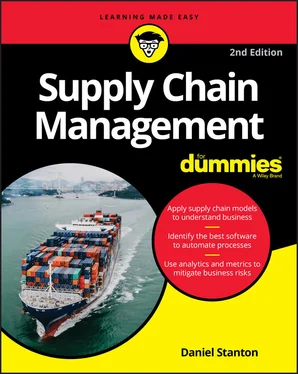
 TPS originated in the manufacturing world, so it is often called Lean Manufacturing, but the principles have gradually been adopted in retail, distribution, and even service-based organizations. These days, you can find Lean initiatives in virtually every industry.
TPS originated in the manufacturing world, so it is often called Lean Manufacturing, but the principles have gradually been adopted in retail, distribution, and even service-based organizations. These days, you can find Lean initiatives in virtually every industry. Because Lean originated in a Japanese company, many of the principles of Lean Manufacturing are described in Japanese terms.
Because Lean originated in a Japanese company, many of the principles of Lean Manufacturing are described in Japanese terms. Toyota originally identified seven kinds of waste, but as Lean has been adopted in other companies, most of the experts have come to agree that untapped human skills and creativity is so important that it needs to be included as an eighth form of waste.
Toyota originally identified seven kinds of waste, but as Lean has been adopted in other companies, most of the experts have come to agree that untapped human skills and creativity is so important that it needs to be included as an eighth form of waste.